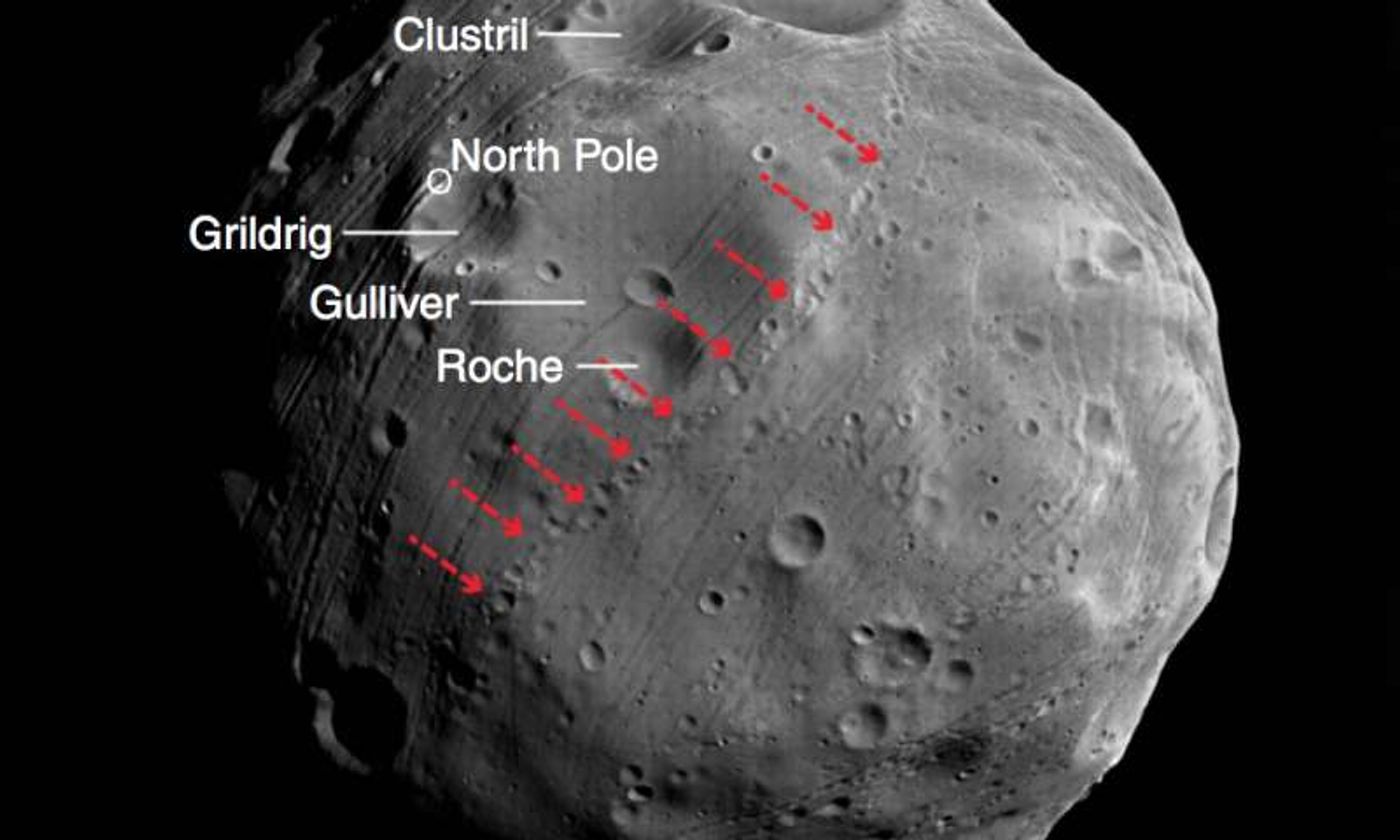Scientists Predict the Origin of a Strange Trail of Craters on Phobos
A team of researchers from UC Santa Cruz, led by Michael Nayak, have been studying the strange chain of craters that appear on the surface of Mars’ closest-orbiting satellite: Phobos.
Their findings have been published in the journal Nature Communications.

Image Credit: ESA/Mars Express, modified by Nayak & Asphaug
Phobos is a moon of Mars, and it orbits the red planet more closely than any other known satellite orbits any other planet in our solar system. At just 5,600 miles above the planet’s surface, it completes an orbit around the red planet in less than seven hours, and it also falls within something known as the Roche Limit.
Inside of the Roche Limit, a satellite is theoretically too close to its host planet to stay in-tact. In fact, the gravitational forces at work should theoretically be so detrimental to the moon that it experiences tidal forces strong enough to erode and crumble the moon over time.
Evidence for this is seen across Phobos’ surface, where the moon is lumpy and disfigured and probably being warped by the strong gravitational forces. Ruptures in the surface and stress cracks are seen all over it.
The chain of craters, on the other hand, is observed in almost a straight line across the moon’s surface, and scientists have been experimenting with computer models to figure out just how they might have formed.
It turns out that Phobos isn’t exactly a large moon; in fact, at just under 14 miles across, it has a very weak gravitational pull, and this means it’s really easy for objects to slam into Phobos and bounce up to become airborne again.
When it managed to escape Phobos’ gravitational cling, it eventually gets re-captured by the moon’s gravity as the moon orbits the red planet. During this process, the object hits the moon in new places, which could be responsible for this strange chain of craters.
"A lot of stuff gets kicked up, floats for a couple of orbits, and then gets recollected and falls back in a linear chain before it has a chance to be pulled apart and disassociated by Mars' gravity," Nayak said. "The controlling factor is where the impact occurs, and that determines where the debris falls back."
The computer models the researchers created based off of what we know about the moon’s strange qualities seem to match the actual chain of craters on the moon’s surface, suggesting that the researchers may have a solid theory.
They also concluded that because Phobos is the closest-orbiting satellite in the solar system, it may be the only place in the solar system that has the characteristics for these kinds of things to happen the way they do.
Source: Phys.org









